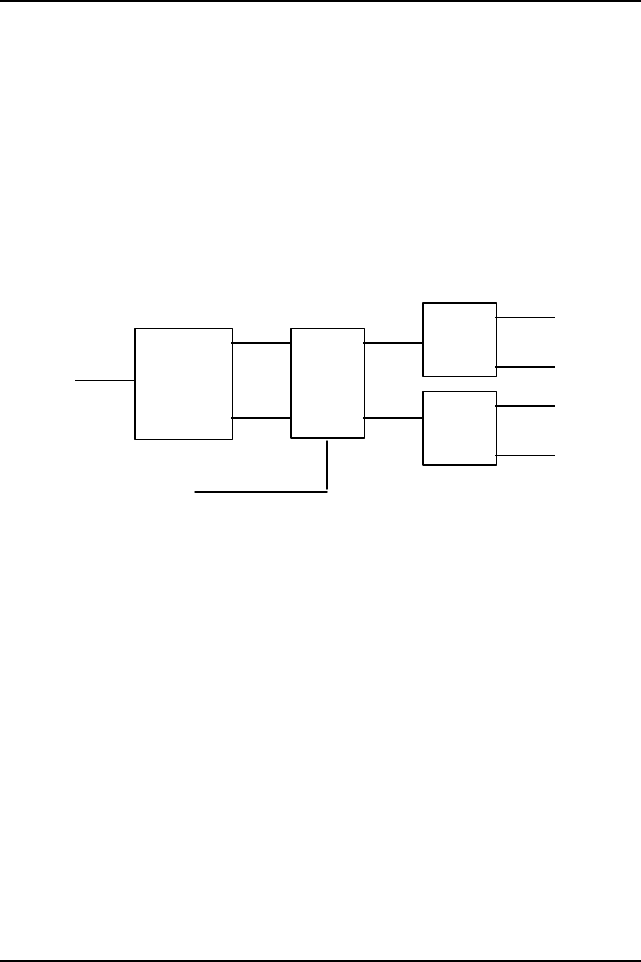
Operation Theorem •31
4.2 Interrupt Control
4.2.1 System Architecture
The PCI-9111‘s interrupt system is a powerful and flexible system which
is suitable for A/D data acquisition and many applications. The system is
a Dual Interrupt System. The dual interrupt means the hardware can
generate two interrupt request signals in the same time and the software
can service these two request signals by ISR. Note that the dual interrupt
does not mean the card occupies two IRQ levels.
The two interrupt request signals (INT1 and INT2) come from digital input
signals or the timer/counter output. An interrupt source multiplexer (MUX)
is used to select the IRQ sources. Fig 4.2.1 shows the interrupt system.
Figure 4.2.1 Dual Interrupt System of PCI-9111
4.2.2 IRQ Level Setting
There is only one IRQ level is used by this card, although it is a dual
interrupt system. This card uses INT #A interrupt request signal to PCI
bus. The motherboard circuits will transfer INT #A to one of the AT bus
IRQ levels. The IRQ level is set by the PCI plug and play BIOS and
saved in the PCI controller. It is not necessary for users to set the IRQ
level.
4.2.3 Dual Interrupt System
The PCI controller of PCI-9111 can receive two hardware IRQ sources.
However, a PCI controller can generate only one IRQ to PCI bus, the two
IRQ sources must be distinguished by ISR of the application software if
the two IRQ are all used.
The application software can use the “_9111_Get_Irq_Status” function to
distinguish which interrupt is inserted. After servicing an IRQ signal,
PCI
Controller
INT #A
IRQ
Flip-
Flops
INT1
Clear IRQ
INT1
MUX
AD EOC
INT2
MUX
Pacer
INT2
FIFO
Half-full
External
IRQ


















